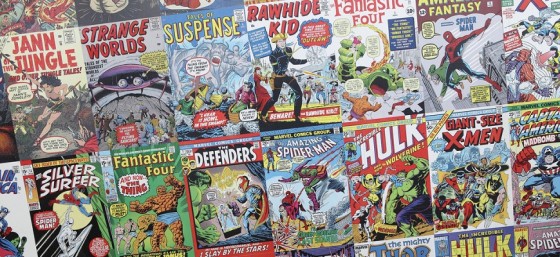I had the pleasure of presenting on Comic Book Creator Rights with the award-winner comic author Mike Baron at Phoenix Comicon last weekend. We talked about how important it is for writers and artists to understand what rights they have in their work and the various ways they can protect it.
Copyright
An artist or writer has copyright rights in their work the moment they put fingers to keyboard or pen to paper. As the owner of their work, they can control where their work is copied, distributed, displayed, performed, and what derivative works can be made.
Unlike books where a complete story is often contained in a single volume, a comic book story may be broken up into several 22-page issues. One thing Mike and I suggested to our audience was registering the copyright in the “story bible” as well as each issue that the artist creates. A story bible is a master document that lays out the setting and norms of that universe and the backstory and characteristics of each major character.
The copyright laws regarding infringement for published and unpublished works are different, and under the current laws (that are in need of overhaul), a work that is released only online is “unpublished.” To maximize your options for recourse (i.e., financial damages), I advise artists to register their work with the U.S. Copyright Office before they release it if it is unpublished. Mike also suggested doing a short run of each issue so the work will qualify as “published” and the rules about when you have to register to be eligible for what’s called statutory damages are more favorable.
Trademark
A comic book artist could have several trademarks related to their series – the name of the series, logos, slogans, and the name and possibly depiction of the characters. Any or all of these could be trademarks used to market the artist’s work.
For each of these potential trademarks, it’s a good idea to run a search on the U.S. Patent and Trademark Office’s (USPTO) trademark database to make sure that another artist doesn’t already have the exclusive right to use that trademark in relation to comic books or similar products. If they do, they can force the other person to rebrand.
If the desired trademarks are available, putting a superscript “TM” next to them will put everyone on notice that the artist is using them as trademarks, not just elements in their series. Registering them with the USPTO will increase their value and give the artist the exclusive right to use those trademarks. No one else in the industry could have the same trademark in the U.S. Registration also increases their value and may make the artist’s work more desirable if their goal is to be acquired.
Identifying and creating a strategy to protect your intellectual property is complicated, so if you want to talk more about this subject, feel free to connect with me on Twitter, Facebook, YouTube, LinkedIn, or you can email me. You can also subscribe to the Carter Law Firm newsletter.
Please visit my homepage for more information about Carter Law Firm.
